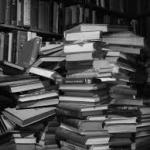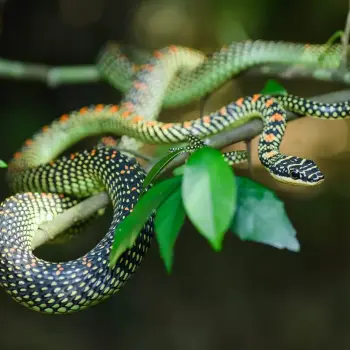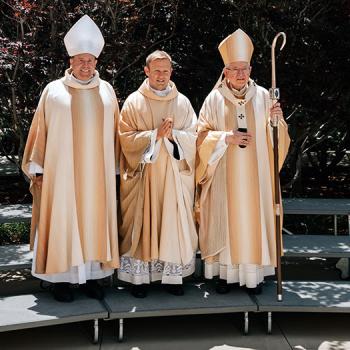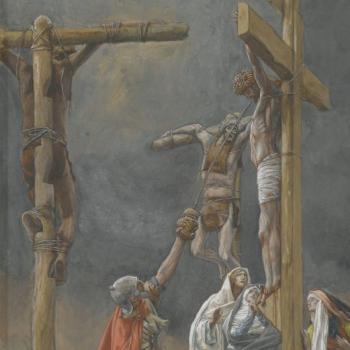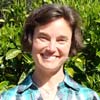 By Natascha Bruckner
By Natascha Bruckner
I recently attended a Buddhist retreat led by monks and nuns in the Order of Interbeing tradition of Thich Nhat Hanh, known to his followers as Thay (pronounced "tie," meaning teacher in Vietnamese). Thay was not at the retreat, as he was being treated for a lung infection in a Boston hospital. (He has since recovered, and is out of the hospital now). In his place, the monastics gave dharma talks to an assembly of 900 retreatants.
Brother Phap Niem was a gentle, soft-spoken monk who talked to us about "cultivating dharma eyes to see things as they are." He said, "We see an orange and think, ‘I know oranges.' But the thing we call orange is only an appearance."
Looking with dharma eyes, we see that the orange isn't what we think it is. It's not a separate entity. It's not solid or permanent. The orange is made of all the elements that created it -- sunshine, rain, dirt, insects that turned the dirt, farmers that fertilized and tended the tree. The orange is also made of all the elements that created these elements: the cloud that changed into rain, the farmer's mom and dad. And the orange is also all the elements it will become: worms that eat its rind, you who eat its sweet wedges.
In the great kaleidoscope of life, none of us can exist without all the others. But it gets deeper: each of us is all the others. So, really, there are no others.
Brother Phap Niem explained: "Inside of you, you can find everything. There is only one thing you do not contain -- a self." This is a Zen master's way of saying: a) you're purely made of stuff that isn't you, and b) everything that seems to be outside you is actually part of you. The fancy spiritual term is nonduality, also known as oneness.
Some people have had direct experiences of oneness. They've realized their true self, inclusive of everything and everyone, in moments of divine interconnected bliss. I occasionally access this oneness in fleeting instants, when I feel someone else's emotions, or know what they're going to say before they say it.
Practicing Reiki (hands-on energy healing) brings me closest to that feeling of oneness. In Reiki, my body becomes a conduit for energy, like a hollow straw. Healing energy pours through my palms into the other person. Sometimes I let my consciousness extend out through my hands, into the other body, and I sense colors, shapes, dark blockages, currents. I see dreamlike images. Once while giving Reiki to a client, I envisioned her practicing non-violent martial arts, not in self-defense but to cultivate inner strength and integrity. After the session I asked if she had ever done martial arts. She said no, but she'd been wanting to take a class. Many other times I've seen and felt clients' inner truths. How could I perceive these visions if we weren't all one?
But my mind protests. Even if we're all one, we are also separate. I don't feel pain every time somebody stubs a toe (thank goodness). It's a bewildering paradox. How is it that we are separate bodies, and also all one consciousness, one vast ever-moving organism?
I understand nonduality best when I think about holograms. In a hologram, every fragment contains the whole. (The fact that our minds can conceptualize this miracle might be evidence that we are indeed holographic.) In a brilliant article called "The Universe as a Hologram," Michael Talbot explains that "if we try to take apart something constructed holographically, we will not get the pieces of which it is made, we will only get smaller wholes." He describes a remarkable scientific experiment in which electrons instantly communicated with each other, no matter how far apart they were. Physicist David Bohm has proposed that "the reason subatomic particles are able to remain in contact with one another regardless of the distance separating them is not because they are sending some sort of mysterious signal back and forth, but because their separateness is an illusion. . . . At some deeper level of reality such particles are not individual entities, but are actually extensions of the same fundamental something."
At the Buddhist retreat, I felt the nonduality of 900 bodies moving as one organism, slowly walking in a meditative river, and bowing to our monastic teachers, continuations of Thich Nhat Hanh and the Buddha. One thousand Buddhas, each a form transforming, breathing as one body. I believe the future of Buddhism promises multiple minds awakening to this oneness. Our survival may depend upon it.
Natascha Bruckner serves as managing editor of the Mindfulness Bell, a journal of the art of mindful living in the tradition of Zen Master Thich Nhat Hanh.
7/5/2010 4:00:00 AM
